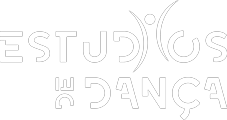Technologically Expanded Perception
[EN]
Perception has been evolving since the dawn of life, producing a vast multiplicity of modalities of experience (and existence) structured by the patterns of common ancestry. Moreover, in the case of the human species, unpredictable inventions shaped perception at a much faster rate throughout the ages, including both physical apparatuses as well as new theories and other tools for thinking. This unpredictability complies with Clarke’s Third Law: any sufficiently advanced technology is indistinguishable from magic. Who could predict, in ancient Mesopotamia, a world of planetary-scale digital networks of technologically mediatized information?
Nevertheless, modern approaches in neuroscience consider human beings as biological prediction systems, that is, as cognitive 'oracle machines'. Karl Friston (2016) hypothesizes that the brain might use a “free energy principle” to minimize the amount of surprise. In his theory of “embodied active inference” the brain’s mission is to infer the causes of its sensory inputs, thus behaving as a Bayesian filter where prediction errors become highly relevant data. Such approach is a huge development, since the scientific discoveries of the 19th century fostered the birth of psychophysics, focused on the connection between the external world and its perceptual counterpart.
Technologically expanded perception elicits the co-dependence of bottom-up input sensory information processing and the top-down projection of conceptual understanding. Thus, vision or hearing do not act simply by analysis (the decomposition of reality into categories) but also by synthesis (the active regrouping into larger units), a ‘strange loop’ of recursive compositions and decompositions that can be classified as 'intelligent' insofar as it surpasses information into the domain of awareness and understanding.
The decoupling of the worlds of information and interpretation was precisely one of Shannon’s breakthroughs in 1948, when he presented a mathematical theory of information. Since then, arguments which attribute a central role to entropy and information have been at the forefront of debates on both contemporary physics and philosophy. A medium is indeed required for the transmission, processing and storage of information. But a medium can present itself to cognition in any shape or form: sound, light, language, radio, television, the internet, the city.
Sounds and cities, rather than destinations, have been powerful means for understanding and transforming the world. The city is a medium (Kittler, 2013) to the extent it distributes a new sensory reality. After all, cities replace non-human nature with concrete materializations of the human mind. Hopes, dreams, technologies and discoveries redefine ways of living, of thinking and feeling. A city is not a tree (C. Alexander), but a far more intricate type of network that reveals the human desire for predictability and control. However, silence, for Cage, is exactly that which escapes intentionality. From Moholy-Nagy’s Theater of totality, Duchamp, performance art and happenings, the Real is always at ‘the point of impossibility’ of formalization. We cannot, in fact, turn off our aesthetic faculties when walking down the street, even outside the museum or concert hall, even though, as the average sound level of cities rises, there is less and less space to think.
Jonas Runa (Universidade Lusófona de Humanidades e Tecnologias)
[EN]
Artist, Composer, Researcher. His work was presented at the Museo Guggenheim Bilbao, 55th and 56th Venice Biennale, 798 Art District (Beijing), among other venues. He holds a PhD in Science and Technology of the Arts, a Post-Doc on Artistic Research, and is a member of the Portuguese Academy of Sciences/Young Scientists Seminar.
